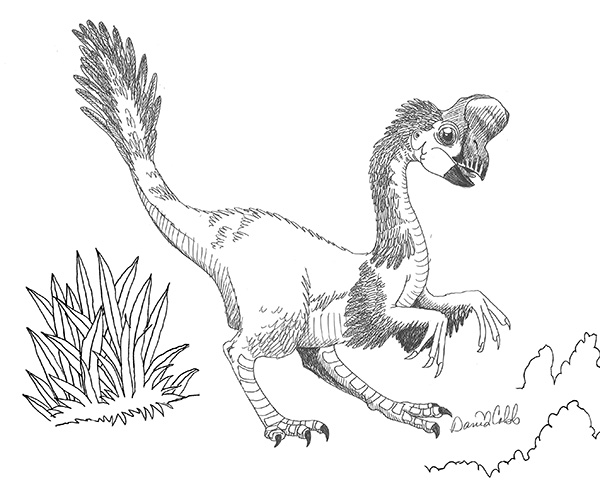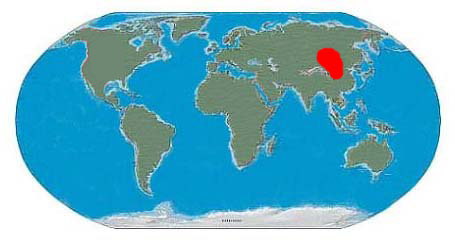Sign up for Lesson Plans, discounts & more!
Oviraptor
Egg Thief or Protective Mother?
Oviraptor is small dinosaur, categorized as an ornthniscian, meaning that it was bird-hipped. Its name comes from Latin, meaning 'egg snatcher,’ referring to the fact that the first fossil specimen was discovered atop a pile of what were thought to be Protoceratops eggs. Oviraptor lived about 75 million years ago during the late Cretaceous period, as did Protoceratops. I wonder if there was ever a battle between the two species, for eggs?
Oviraptor possessed many similar feature to birds, and probably looked similar to a modern day ostrich. Findings of both creatures included a set of unique growths on each rib that would have kept the rib cage rigid. Nomingia, a relative to the Oviraptor, had a structure called a pygostyle, which is a set of fused vertebrae that would later help support the tail feathers of birds. Skin impressions of some other close relatives of the oviraptor show evidence of feathered wings and feathered tail fans. Because of this oviraptors probably had feathers as well. Also, Oviraptor skeletons were found atop nests of eggs in a brooding position exactly like that of living birds.
Name |
Oviraptor |
Classification |
ornithischian |
Food |
Carivore |
Length |
6 feet |
3 height |
feet |
weight |
45 pounds |
Range |
Mongolia and China |
Time Period |
Late Cretaceous Period |
Oviraptor was about 6 feet long and walked had two long hind limbs. Each limb had three claws, that were used to hold, rip and tear their prey. It used its toothless beak to catch and devour its food. Sounds like a pretty deadly combo!
As its name suggests, Oviraptor was originally presumed to have eaten eggs, because its fossils were discovered with fossilized eggs or nests. It was hypothesized that the toothless beak would have been conducive to breaking open the shells of eggs. However, some paleontologists think that the jaw was not designed to actually eat the eggs. They claimed the name "oviraptor" (egg snatcher) is a misnomer; their jaws are not useful for eating eggs, but for crushing very hard food. This was later supported by other discoveries that indicated that the oviraptor was brooding its own eggs and not eating those of a protoceratops.
The Oviraptor Timeline
Mesozoic |
||
Triassic |
Jurassic |
Cretaceous |
Oviraptor had a uniquely shaped jaw bone, where the bone actually extended below the jaw line and would have pushed into the space between the toothless lower jaws. This made it easier to use force to open tough shells. Oviraptor was presumed be mostly carnivorous because of remains of other creatures found in its stomach.
Oviraptor was first discovered by technician George Olsen in an expedition led by Roy Chapman Andrews, and first described by Henry Fairfield Osborn, in 1924. Roy Chapman Andrews also led the expedition in which the first Protoceratops fossil was discovered. I wonder if they were on the same expedition? The only Oviraptor fossils found have been in Mongolia and China.
Back to Dinosaur Central
Dinosaur Egg Shells For Sale
Check out some of the Educational Materials for sale on our sister site fossilicious.com.

interested in more? If so, you may want to check out our other sites:
fossilicious.com - Our online fossil and mineral rock shop.
rocksandminerals4u.com - An educational site about rocks, minerals, and geology.
Geologic Time Geologic Time Line
Cenozoic Era
Quaternary
Neogene
Paleogene
Mesozoic Era
Cretaceous
Jurassic
Triassic
Paleozoic Era
Permian
Carboniferous
Devonian
Silurian
Ordovician
Cambrian
Archean Time
Hadean Time
Teachers Resources
Activities for Education and Fun
Earth Science Lesson Plans
Activities For Kids
Fossil Lesson Plans
Fossil Activities
Education Articles
Coloring Pages
Dinosaur Coloring Pages
Montessori Materials
Geology Club
Fossil Hunting
 |
 |
 |






